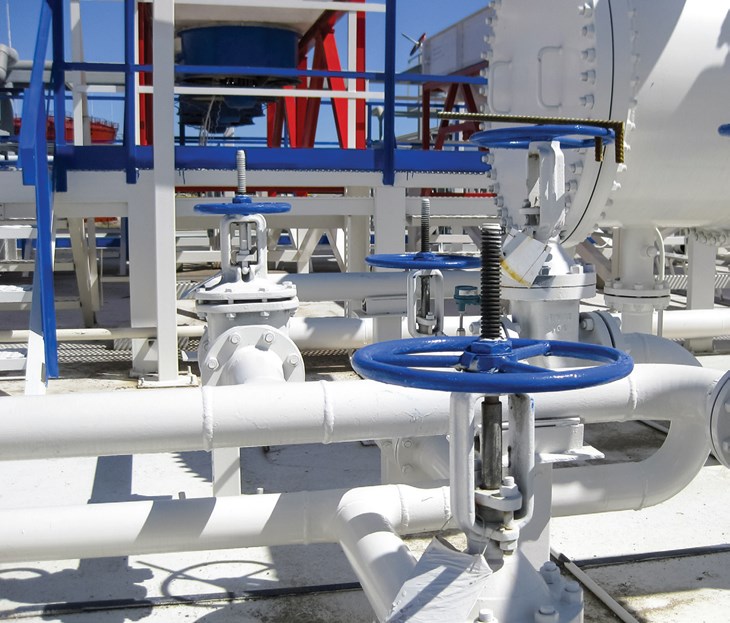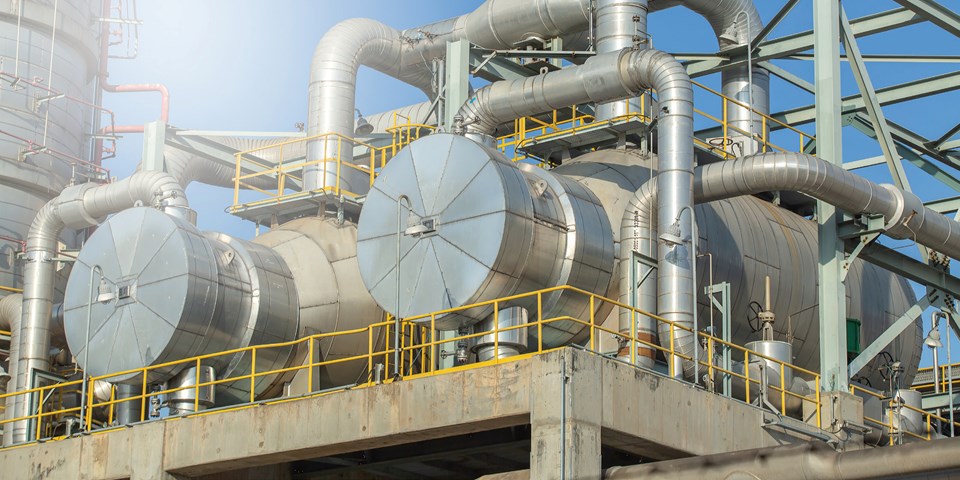By Paul Ernst, Regional Manager – TEADIT North America
Combustion cannot occur without the presence of oxygen. Conversely, an oxygen rich environment can be extremely dangerous when there is adequate fuel and the risk of ignition from something like a spark caused by static electricity. For this reason, in many industrial, chemical, and pharmaceutical environments, where high-purity oxygen is used, the risk for serious accidents is at the forefront of everyone’s mind.
In fact, although oxygen itself is non-flammable, as a fire promoter it is considered a hazardous substance. In valves, piping, and other plant components, the selection of both non-metallic and metallic sealing materials suitable for use in oxygen, along with their proper handling, are important safety issues. The use of unsuitable materials and the presence of potential contaminants such as oils, fats, greases, or organic particles must be avoided to mitigate the potential for an accidental ignition event. Many of these contaminants will react violently in the presence of oxygen. Therefore, if such an event were to occur, the high oxygen concentration could lead to life threatening fires or explosions.
Testing
Standardized testing is required for non-metallic materials used in oxygen service. This not only includes valves and piping, but also sealing materials such as gland packing and gaskets. The testing considers the working duty and pattern of use of the material being tested, as well as the maximum operating temperature and pressure. Where appropriate, testing can also be done for use in liquid oxygen (LOx).
Such tests are carried out, for example, by the German Bundesanstalt für Materialforschung und – prüfung (Federal Institute for Materials Testing and Research, or BAM as it is colloquially referred to) in Berlin or commercial laboratories, such as Wendell Hull & Associates (WHA). The results summarized in the test reporting contains information about the maximum operating pressure and temperature for safe usage in compressed oxygen gas and information regarding use in liquid oxygen. These results relate exclusively to the specific batch of the respective sample material or pattern used. It is important to recognize that a test report is not an approval, and that no certification or license are issued.
It is also imperative for users to recognize that since this testing does not compare results to a standard or normalized value or threshold, the fact that a product was tested for oxygen service requirements should not be considered an indication that said product performs sufficiently for the requirements of a specific application. To put it simply, test results only indicate that the product was tested in a lab environment. These results need to be considered against the requirements and operating conditions that the product will be subjected to, and usage recommendations should include consideration of a safety factor.
Safety
In order to ensure the safety and availability of oxygen service components, a closed chain must be created starting from the production of the materials, through their further processing, and into gland packings, gaskets etc. It is incumbent upon end users to make sure that the gasket manufacturers and packing braiders are explicitly informed about the intended oxygen application during the order process. This allows the packing and gaskets to be handled as carefully as possible and when required, using specific manufacturing processes.
It is also the end user’s responsibility to check whether the present safety assessment (e.g. BAM test report) meets their process requirements. Usually, packing and gaskets for oxygen use are separately manufactured (free from oil and grease), cleaned and inspected utilizing specialized procedures, and individually packaged in a clean environment. Materials or parts are then typically labeled to indicate that they have been specially prepared for oxygen service and should remain in their packaging until ready for use, and follow best practices.
Best Practices
These best practices typically address the need for high quality oxygen service sealing products using a multi-strategy approach. It is important to recognize that not all products are equal, nor are they equally suited for the job. Best practices include choosing materials that have been specially designed or carefully tested specifically for the rigors of oxygen service conditions.
For compression packing, this means that products intended for oxygen service should be produced on dedicated braiders, utilizing either flexible graphite (fire safety) or PTFE (chemical resistance) based yarns. The braiding machines should be restricted to locations with controlled conditions, such as a clean room, that can prevent cross-contamination. Manufacturing lots should be limited to batch runs and packaged upon production, typical to requirements seen in the Compressed Gas Association (CGA) specification for components.
For gaskets, individual products are independently evaluated at BAM or WHA, as previously mentioned, and test reports will validate the products’ ability to perform as required. Again, manufacturing or fabrication of products meant for oxygen service should be well controlled. In general, gasket fabrication shops do not offer an environment conducive to limiting the potential for cross-contamination, as it requires special consideration and planning.
Besides the manufacturing area itself, all equipment and surfaces that come into contact with the part must be thoroughly cleaned and protected, including personnel’s hands as even skin oils can be problematic. Solution baths, ultrasonic cleaners, and other methods of cleaning can be utilized as long as special care is taken to ensure that the cleaning products/methods themselves do not introduce any foreign matter and that they are safe for use with the gasket material (i.e. they will not prematurely degrade or damage the gasket in any way). Black lights can be used to inspect the parts to ensure they have been sufficiently cleaned. As previously mentioned, standard practices or instructions do not exist, so it is incumbent on each manufacturer to ensure that their process is adequate. Thus it is important for end users to properly vet their sources to ensure that they only select products from trustworthy and reputable manufacturers in their critical service applications.
Best Practices
These best practices typically address the need for high quality oxygen service sealing products using a multi-strategy approach. It is important to recognize that not all products are equal, nor are they equally suited for the job. Best practices include choosing materials that have been specially designed or carefully tested specifically for the rigors of oxygen service conditions.
For compression packing, this means that products intended for oxygen service should be produced on dedicated braiders, utilizing either flexible graphite (fire safety) or PTFE (chemical resistance) based yarns. The braiding machines should be restricted to locations with controlled conditions, such as a clean room, that can prevent cross-contamination. Manufacturing lots should be limited to batch runs and packaged upon production, typical to requirements seen in the Compressed Gas Association (CGA) specification for components.
For gaskets, individual products are independently evaluated at BAM or WHA, as previously mentioned, and test reports will validate the products’ ability to perform as required. Again, manufacturing or fabrication of products meant for oxygen service should be well controlled. In general, gasket fabrication shops do not offer an environment conducive to limiting the potential for cross-contamination, as it requires special consideration and planning.
Besides the manufacturing area itself, all equipment and surfaces that come into contact with the part must be thoroughly cleaned and protected, including personnel’s hands as even skin oils can be problematic. Solution baths, ultrasonic cleaners, and other methods of cleaning can be utilized as long as special care is taken to ensure that the cleaning products/methods themselves do not introduce any foreign matter and that they are safe for use with the gasket material (i.e. they will not prematurely degrade or damage the gasket in any way). Black lights can be used to inspect the parts to ensure they have been sufficiently cleaned. As previously mentioned, standard practices or instructions do not exist, so it is incumbent on each manufacturer to ensure that their process is adequate. Thus it is important for end users to properly vet their sources to ensure that they only select products from trustworthy and reputable manufacturers in their critical service applications.

Conclusion
The production processes currently differ significantly from manufacturer to manufacturer, as does the handling of this issue by end users. There is not one singular standard or rule that regulates this process unequivocally. However, national and international standards specifying the test procedures for the safety assessment of materials, valves, and components do exist, as do inspection guidelines and recommendations. To help bring all of this information together and to work towards the establishment of standards, working groups with participants from packing and gasket manufacturers have already been formed in associations, such as MSS and ASTM. In some cases, they include end user participants as well. Significant awareness needs to be increased regarding the dangers of industrial oxygen applications including careful selection of sealing products to ensure the implementation of best practices.



